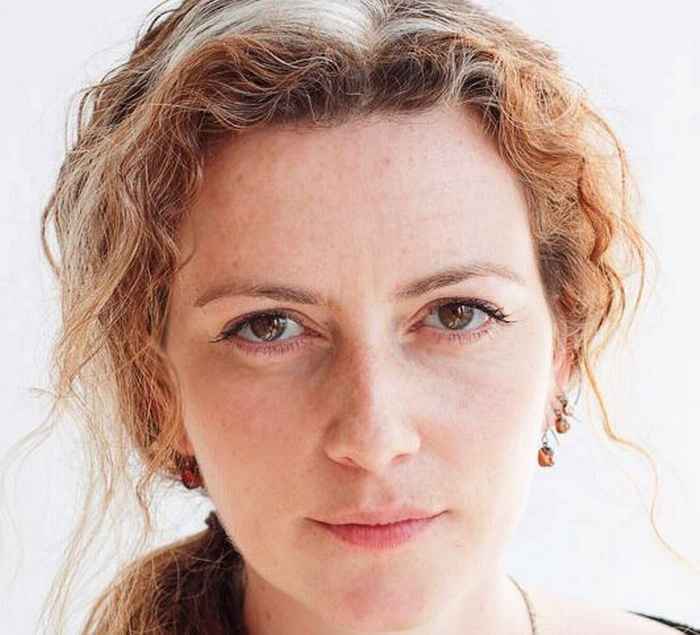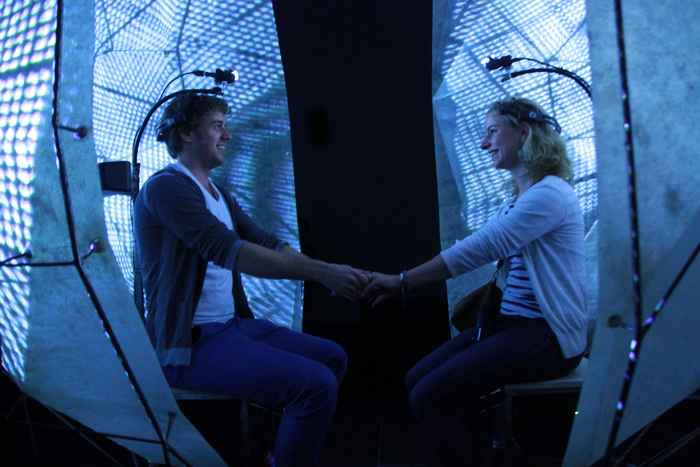Are we really on the same wavelength?
Suzanne Dikker receives ERC grant for research into intergenerational communication
6 februari 2024

‘When people first take part in the research, they sometimes ask if I can tell from their brain waves whether or not they are a good match,' Suzanne Dikker laughs in a Teams meeting from New York. ‘In that case, I can assure them that I would not base a decision about breaking up or buying a house together on whether they are on the same wavelength.'
Synchrony
The fact that participants think that about Dikker’s research is not so strange. They take a seat opposite each other and both have to wear an EEG headset. They are subsequently asked to interact with each other by having a conversation, watching or listening to something together.
The term ‘synchrony’ plays a major role in Dikker’s research. That is an overarching term under which various things fall, she explains: ‘Synchrony s a phenomenon in which data flows show the same patterns between different people. That could be brainwaves, but also speech or physiological characteristics, such as heart rhythms. Our brainwaves and behaviour display synchronous patterns when we watch a film that we both enjoy, for example, but also if we like each other.’

We weten dat de hersengolven van een zevenjarige in sommige opzichten veel gelijkenissen kunnen vertonen met die van een zeventigjarige.Suzanne Dikker
Role of the grandparent
Dikker and her team are researching how this synchrony works intergenerationally: are people from different age groups on the same wavelength in their communication or not? ‘If you look at previous research, you see that people with more synchronous patterns in their brainwaves and movements also communicate better with each other sometimes and feel more connected with each other. We now know that the brainwaves of a seven-year-old display many similarities in some aspects with those of a seventy-year-old. That combination of findings raises many questions, for example about the role of the grandparent in upbringing. International research has shown that growing up in multigenerational households can be good for the development of children. It may well be the case, in some respects, that parents can communicate better with children than (young) adults, because their basic rhythms are the same.’
In the research itself, children, parents and adults are going to tell each other stories and families will have conversations together. The participants will subsequently find out whether their brain patterns are the same or not. Dikker and her team will analyse the resulting data with the aid of follow-up experiments in the lab.
As a result of the ERC Consolidator Grant, it will be possible to make the group of participants more diverse according to Dikker. ‘A lot of research is based on people from the university, and their family and acquaintances, and that is not a representative sample of society. This may create a skewed picture of how the human brain works and our behavioural patterns. By setting up a real-world neuroscience & social biofeedback lab, and devising the research in collaboration with communities, schools, festivals and museums, we can involve a broad target group of participants. I hope that the lab will also be used by others for their own research.’
Art, education and science
During her Linguistics study at the UvA, Dikker became interested in the question of how it’s possible that our brain is able to understand something as complex as language. While completing her doctoral programme at New York University, she subsequently researched which role the predictive character of our brain plays therein. ‘The first neurolinguistic studies primarily took place in the lab, without a discussion partner’, says Dikker, ‘but language as it is used in “the real world” is much more than separate words on a screen, of course, and a lab is not the most natural environment for everyday conversations.’
Dikker looked for ways for research into social interaction to be conducted outside the lab, which led to her work taking place at the interface of science, art and education. For example, she developed a series of interactive biofeedback art installations about synchrony, in collaboration with the artist Matthias Oostrik and the dance company ICK Amsterdam, including the museum installation The Mutual Wave Machine.
‘Participants wear a headset which is used to measure their brainwaves. Subsequently, they also get to see a visual and auditory representation of this themselves If the brainwaves are on the same wavelength, that results in harmonious colours and music. If they are not on the same wavelength, audiovisual chaos ensues. ‘We do this no only to create an experience, but also to make the research tangible for the participants,’ explains the neuroscientist. ‘Moreover, this appears to have a beneficial effect: people who are more aware of the feedback also show more synchrony in their brain patterns.
Dikker also opted for an interactive approach in her brain research in classrooms. Together with fellow scientists, she developed MindHive: an online citizen science platform where pupils and organisations can set up and conduct research outside the university field of activity.
With her ERC grant, she is combining all her research lines: biofeedback, and brain research into the mechanisms of social interaction in the real world.

